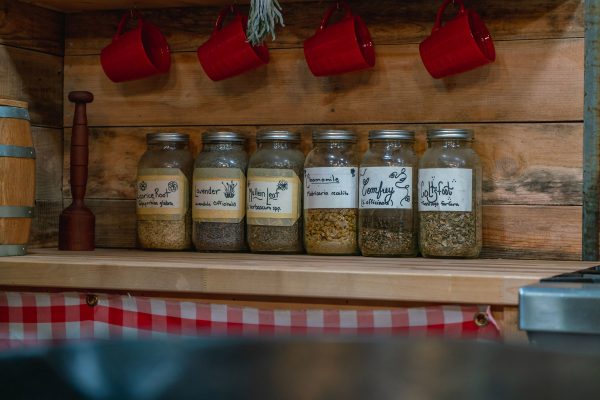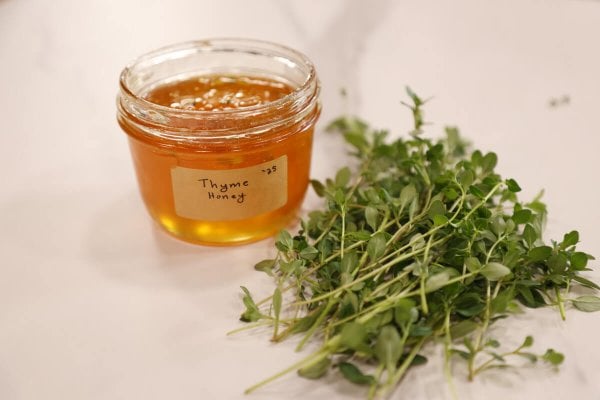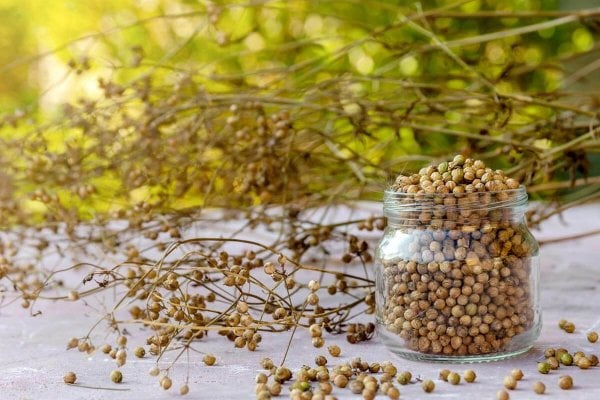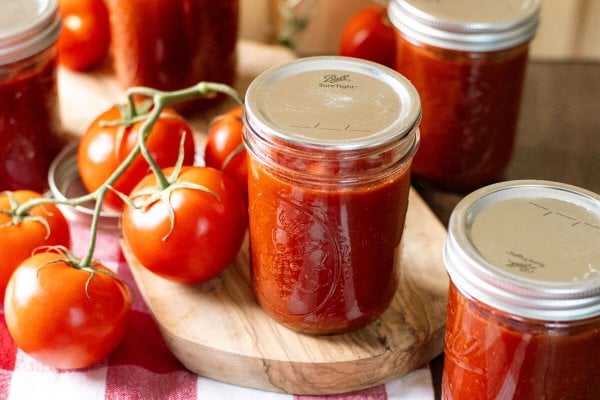Did you know that salt’s versatile powers extend far beyond just seasoning your food? This common household ingredient has an array of surprising uses that can simplify your chores, provide natural remedies, and unlock a range of benefits in your everyday life.

Table of Contents
ToggleWhy I Love These Salt Hacks
If you’ve been around here for long, you know how much we love our Redmond Real Salt for all things cooking and preserving. We even love it for our animals! Who knew salt had so many other amazing uses?
As we continue on in our series of surprising uses from everyday ingredients, be sure to check out some of our other posts:
- Versatile Cornstarch Uses for Home & Kitchen
- Vinegar Uses: Discover Surprising Household Hacks
- Baking Soda Uses: Cleaning Tips & Household Hacks
- Washing Soda Uses: My Top Tips for Clean Living
- Versatile Epsom Salt Uses for Your Home
- Unexpected Dish Soap Uses – Tips & Tricks!
- Hydrogen Peroxide Uses: Clever Cleaning Tips
- Versatile Cream of Tartar Uses in Your Home

Different Types of Salt
Before we explore the numerous uses of salt, let’s take a closer look at the different types available: table salt, sea salt, and sodium chloride. Each type carries its own distinct properties and applications that make it suitable for specific purposes.
Table Salt
Table salt is the most common type of salt found in households. It is typically refined and processed, often containing additives like iodine to prevent iodine deficiency disorders. Its fine texture and high sodium chloride content make it popular for everyday cooking and seasoning.
Sea Salt
Sea salt is produced by evaporating seawater, resulting in large crystals with a coarser texture compared to table salt. It is less processed and retains trace minerals, giving it a more complex flavor profile. Sea salt is ideal for adding a finishing touch to dishes, as well as for use in marinades and rubs. We use and love Redmond Real Salt (use code “HFSalt” for 15% off your order).
Sodium Chloride
Sodium chloride, commonly known as rock salt, forms naturally as white crystals or grains. It is often used in making homemade ice cream and brines and in the production of other types of salt, including table salt and sea salt.
Beyond culinary applications, sodium chloride is also used for industrial purposes, such as de-icing roads and as an essential component of water softeners.
While these are the most commonly used types of salt, there are other variants available, such as kosher salt, Himalayan pink salt, and black salt. Each type offers its own unique flavor, texture, and usage.
Understanding the differences between them can help you choose the right salt for your culinary and household applications.
| Type of Salt | Texture | Usage |
|---|---|---|
| Table Salt | Fine | Everyday cooking, seasoning, and cleaning. |
| Sea Salt | Coarse | Finishing touch, marinades, rubs. |
| Sodium Chloride | Crystals or grains | Industrial, water softeners, ice cream making, and de-icing. |

Cooking Hacks Using Salt
Salt is not just a flavor enhancer for your meals; it can also be a handy tool in the kitchen for various purposes.
| Task | Salt Hack |
|---|---|
| Preventing Fruit from Browning | When sliced fruits like apples or pears come into contact with air, they tend to brown quickly. To prevent this browning process, soak the fruit slices in a solution of salt and water for a few minutes. The salt helps inhibit the enzymatic activity that causes browning, keeping your fruit looking fresh and appetizing for longer. |
| Eggs | 1. Adding salt to the water when boiling eggs will allow the eggs to peel more easily. 2. Poaching eggs in salt water will help the egg whites to set. 3. You can test to see if an egg is fresh by floating it in salt water. If the egg sinks, it’s fresh, but if it floats, it’s best to toss it. 4. Easily clean up an egg spill by sprinkling it with salt before wiping up the mess. |
| Egg Whites and Whipping Cream | Add a pinch of salt when whipping egg whites or whipping cream to achieve better results. |
| Bitter Coffee | If you have brewed your coffee for too long, don’t fret. Adding a pinch of salt will help improve the flavor. |
| Prevent Cheese from Molding | Moldy cheese is disheartening, especially when you take the time to make your own dairy products. To preserve cheese longer, dip a clean linen cloth in salt water and allow it to dry. Wrap the cheese in the dried cloth and store it in the fridge. |
| Put Out a Grease Fire | Dousing a small grease fire with water will only make it worse. Instead, you can smother the fire with salt. |

Using Salt to Clean the Kitchen
In addition to cooking hacks, salt proves to be a valuable cleaning ally in the kitchen.
| Task | Salt Solution |
|---|---|
| Clean Refrigerator | Create a paste by mixing salt and water, then use a cloth or sponge to gently scrub the soiled or stained area. The abrasive texture of salt will help lift stuck on spills while absorbing offensive odors. |
| Wooden Cutting Board | To keep your wooden cutting board fresh and clean, sprinkle some salt on it and scrub with a sliced lemon. The abrasive salt helps remove stains and odors, while the natural acidity of the lemon works as a disinfectant. Rinse thoroughly with water and allow it to dry before using it again. |
| Clean Pots and Pans | Stubborn stains on your pots and pans? Salt can help remove them. Sprinkle salt generously on the stained areas and add a little water to form a paste. Let it sit for a while and then scrub with a sponge or brush. Rinse thoroughly with water, and you’ll be amazed at how easily the stains come off. |
| Coffee and Tea Stain Remover | Do your favorite mugs and cups have stubborn coffee or tea stains? Try sprinkling some salt on a damp sponge or cloth and gently scrubbing the stained area. The salt’s abrasive texture can help lift those stubborn stains, leaving your drinkware sparkling clean. |
| Remove Lipstick Marks from Glassware | Lipstick marks on glassware can be difficult to remove, but salt can make the task easier. Create a paste by mixing salt and water, then use a cloth or sponge to gently scrub the stained area. The salt’s abrasive texture will help lift the lipstick marks, leaving your glassware clean and shiny. |
| Oven and Stove Cleaner | Burnt on spills can be tough to remove, but salt comes to the rescue! Immediately sprinkle enough salt to cover the spill, and let it sit until it cools. You can then lift the spill using a spatula and wipe the remaining mess clean with a damp cloth. |
| Refresh a Sponge | Sponges (and sponge mop heads) need to be cleaned regularly. Fortunately, this is easy to do. Simply add ½ cup of salt to a half-gallon Mason jar, add sponge(s), and fill the jar with warm water. Cap the jar and shake until the salt is dissolved. Let the jar sit overnight. Remove sponges and rinse clean. |

Salt Uses for the Laundry
When it comes to doing laundry, salt can be your secret weapon in keeping your clothes clean and fresh.
| Task | Salt Solution |
|---|---|
| Laundry Pre-treater | Salt can be used as a pre-treater for stubborn stains. Simply dissolve a small amount of salt in cold water and apply it directly to the stain. Let it sit for a few minutes before laundering as usual. The salt solution helps to break down the stain and make it easier to remove during the washing process. |
| Prevent Colors from Running | No one wants their favorite shirt to bleed color and ruin the rest of their laundry. To prevent colors from running, add a tablespoon of salt to the wash cycle. The salt helps to set the dyes in the fabric, preventing them from bleeding onto other clothes. |
| Grass Stains | Grass stains can be stubborn and difficult to remove. But with salt, you can tackle them effectively. First, dampen the stained area with cold water. Then, sprinkle salt directly onto the stain and rub it gently with your fingers or a soft brush. Let it sit for a few minutes before laundering as usual. The abrasive nature of salt helps to lift the grass stain, making it easier to remove. |
| Rust Stains | If you accidentally leave a metal object, such as a rusty nail, in your pocket and it stains your clothes, don’t worry. You can use salt to help remove rust stains. Mix equal parts salt and lemon juice to form a paste. Apply the paste to the rust stain and let it sit for about an hour. Afterward, launder the garment as usual, and the rust stain should be significantly lighter or completely gone. Repeat, if necessary. |
| Faded Linens | Over time, linens can lose their vibrancy and become faded. To revive faded linens, soak them in a mixture of warm water and salt for a few hours or overnight. The salt helps to brighten the fabric and restore some of its original color. After soaking, rinse the linens thoroughly and launder as usual. You’ll be amazed at the difference in vibrance. |

Other Household Uses for Salt
In addition to its numerous uses in the kitchen and laundry, salt can be a versatile and effective tool for various household tasks. Here are some unconventional ways you can utilize salt to simplify your daily chores.
| Task | Salt Solution |
|---|---|
| Clean a Fish Tank | Keeping a fish tank clean is important for the health of your aquatic pets. Salt can be a useful ally in this task. Empty the fish tank and sprinkle salt on a damp cloth, then use it to scrub the glass surfaces inside the tank. Rinse thoroughly and set up the tank again, ensuring a clean and safe environment for your fish. |
| Remove Watermarks from Surfaces | Watermarks from hard water on surfaces can be unsightly, but salt can help you get rid of them. Create a mixture of salt and vinegar, then gently rub it onto the watermarks using a cloth. Let it sit for a few minutes before wiping it away. The salt will help dissolve the watermarks, leaving your surfaces spotless. |
| Deodorize Shoes | If you have shoes that emit unpleasant odors, salt can come to your rescue. Simply sprinkle some salt inside the shoes and let it sit overnight. The salt will absorb the moisture and eliminate the odor, leaving your shoes smelling fresh. |
| Shine Brass | If you have brass utensils or decorations that have lost their shine, salt is the answer. Create a mixture of equal parts salt, vinegar, and flour to form a paste. Apply the paste to the brass surface, let it sit for a few minutes, then scrub gently with a soft cloth or sponge. Rinse off the paste with water and buff the brass to a beautiful shine. |
| Natural Drain Cleaner | If you’re dealing with a clogged or slow-draining sink or bathtub, salt can help. Mix a solution of salt and hot water and pour it down the drain. The abrasive nature of salt can help break down grease and debris, allowing for smoother drainage. |
| Frost-Free Windows | In colder climates, frost can easily form on windows, obstructing your view and making it harder to scrape off. To prevent frost from forming on your windows, mix a tablespoon of salt with a gallon of water and apply it to the windows with a sponge or cloth. The salt solution helps lower the freezing point of water, making it harder for frost to develop. |
| Floral Vases | Vases often become clouded with mineral deposits, but you can keep them sparkling clean by adding a third cup of salt to your vase and filling it with warm water. Stir until the salt is dissolved, and allow it to sit for 15 minutes. Then, pour out the water and wipe your vase clean. |

Personal Care Hacks Using Salt
When it comes to personal care, salt can be a secret weapon in your beauty arsenal. Not only is it a common ingredient found in most households, but it also offers a range of benefits for your skin, throat, eyes, and even teeth. Let’s explore some simple yet effective ways to incorporate salt into your personal care routine.
| Personal Care Task | Salt Application |
|---|---|
| Mouthwash | Believe it or not, salt can be used as a natural mouthwash. Simply dissolve a teaspoon of salt in warm water and use it to rinse your mouth after brushing. This simple homemade mouthwash can help freshen your breath and promote healthy gums. |
| Skin Exfoliator | Salt can act as a gentle exfoliator, helping to remove dead skin cells and reveal smoother, healthier skin. Simply mix a small amount of salt with your favorite moisturizer or oil and gently massage it onto your face or body in circular motions. Rinse thoroughly to reveal a refreshed and rejuvenated complexion. |
| Sore Throat Remedy | For soothing relief from a sore throat, try gargling with warm saltwater. Dissolve half a teaspoon of salt in a glass of warm water and gargle for 30 seconds. The saltwater can help reduce inflammation and alleviate discomfort, providing temporary relief for a sore throat. |
| Puffy Eyes | Salt can come to the rescue if you wake up with puffiness under your eyes. Mix a teaspoon of salt with a cup of warm water and soak cotton pads or a clean washcloth in the solution. Gently place the soaked pads or cloth over your closed eyes and relax for 10-15 minutes. The saltwater will help reduce swelling and puffiness, leaving your eyes looking refreshed and revitalized. |
| Whiten Your Teeth | If you’re looking for a natural way to whiten your teeth, salt can be a cost-effective option. Create a homemade toothpaste by mixing equal parts salt and baking soda. Wet your toothbrush and dip it into the mixture, then brush your teeth as usual. The gentle abrasiveness of the salt helps remove surface stains, giving you a brighter smile. |

Uses for Salt Outdoors
We have explored many uses for salt inside the home, but let’s examine how salt can benefit tasks in the garden and other outdoor areas.
| Task | Salt Solution |
|---|---|
| Kill Slugs | Slugs can damage the seeds, roots, stems and leaves of your garden plants. When you locate a slug infestation, sprinkle them with salt, wait five minutes, and repeat until they have expired. |
| Control Cabbage Worms | Cabbage worms feast on brassicas (cabbages, kale, Brussels sprouts, broccoli and cauliflower.) To keep cabbage worms at bay, mix two parts flour to one part salt and dust the leaves of the brassica plants in the morning and evening when the dew is out. |
| Deter Ants | Locate where the ants are traveling, and sprinkle salt along their path to create a barrier they will not want to cross. Homesteading Hack: If you need a solution that will do more than deter ants, use this DIY Borax ant killer recipe. |
| Poison Ivy | To eliminate a poison ivy infestation, mix one cup of salt and a tablespoon of dish liquid for every gallon of water in a garden sprayer. Completely saturate the poison ivy plants, and allow a few days for the treatment to work. (This treatment works best on dry, sunny days.) |
| De-Icer | There is no need to purchase chemical-laden ice melt. Simply sprinkle icy steps and walkways with rock salt. Allow the salt to melt the ice, and shovel them clean. |
As you can see, salt can be a surprisingly useful tool in and around your home. Its natural properties make it an effective and versatile flavor enhancer, food preservative, personal care ingredient, and cleaning agent for various tasks.
So, go ahead and start harnessing the power of salt and incorporate these practical hacks into your daily routine!

FAQ
Salt has versatile powers that go beyond adding flavor to food. It can be used for cleaning, health remedies, and more!
There are various types of salt, including table salt, sea salt, and sodium chloride. Each type has its own unique properties.
Salt helps maintain fluid balance, aids digestion, and supports healthy nerve and muscle function. However, moderation is important, especially for individuals with high blood pressure.
Salt’s versatile powers can simplify chores, provide natural remedies, and unlock surprising benefits in our daily routines.

Other Posts You May Enjoy
- Versatile Uses for Borax Around Your Home
- Vinegar Uses: Discover Surprising Household Hacks
- Baking Soda Uses: Cleaning Tips & Household Hacks
- Washing Soda Uses: My Top Tips for Clean Living
- Unexpected Dish Soap Uses – Tips & Tricks!
- Hydrogen Peroxide Uses: Clever Cleaning Tips
- Versatile Cream of Tartar Uses in Your Home


















